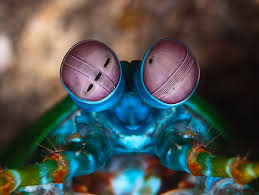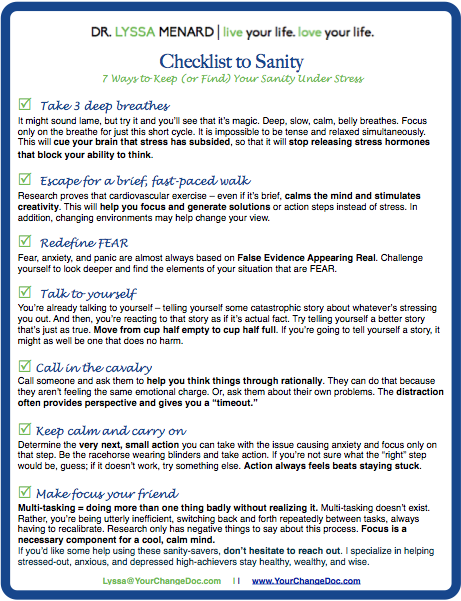 I’ve become obsessed with Mantis Shrimp.
I’ve become obsessed with Mantis Shrimp.
Before you decide you’ve actually stumbled on a crustacean-lover’s blog, stick with me. I promise this has everything to do with your business…and your life. I’ll be getting a lot of mileage out of this little bugger, but today’s wisdom involves vision or, more precisely, the difference between looking and seeing. In your business (and your life), if you spend most of your time looking at problems, promises, people, and possibilities, you best make sure that you’re also seeing. Without the latter, you have no way of knowing what you might be missing.
Mantis shrimp look beautiful – gloriously colorful, if a bit weird and alien. They also see beautiful. To understand what I mean by that, let’s take a quick look at the visual system of animals.
Our eyes contain millions of light sensitive cells, called rods and cones. Rods enable us to see light and motion. Cones enable us to see color, and we humans have three types (red, blue, green).
Animals differ in the number of rods and cones they’re lucky enough to possess. Dogs, for instance, have only two types of cones and, though not colorblind, see a very small range of color.
Enter the Mantis shrimp, possessing 12 types of cones and able to see a whole spectrum of colors that we can’t even name or envision. No matter how hard we simple humans stare, looking won’t help us see what Mantis shrimp take for granted (I assume, never having asked). What Mantis shrimp see is most certainly there. We just can’t see it. Similarly, dogs have more rods than humans and, therefore, have superior night vision and movement tracking. In other words, dogs also see things that humans are unable to see, despite looking.
You’re probably starting to “see” where I’m going. The difference between looking and seeing holds true for more than just vision. In so many ways, it’s important to consider this question: What do we miss when we’re looking instead of seeing?
If you want your business to be great, you’ll need to continually ask yourself, “Am I missing what’s blatantly obvious to my customers, despite my best efforts?” If so, they’re bound to be frustrated and feel neglected (or, in my parlance, “dissed”). Ditto for employees, partners, suppliers, etc.
We can’t improve on our visual systems – this is as good as it gets for the moment. But there’s a lot we can do to improve on our metaphorical ability to see. Here are a few approaches to take:
Get Help
Use a trusted advisor’s visual system. Often, uninvolved, unemotional others can see a much broader picture than is apparent to an individual. I call this “widening the blinkers.” Race horses have limited vision purposely – they’re forced to wear blinkers (blinders) to avoid distraction by peripheral activity. So do humans, we’re just a lot less conscious of it than our equine friends. Some horses become anxious when their peripheral vision is limited, so they are fitted with lower profile blinkers that permit them a broader view. Find and rely on a trusted advisor who can provide the same function for you.
Mindfulness
Mindfulness can be defined as the non-judgmental moment-to-moment awareness of our thoughts, feelings, sensations, and environment. Usually, we humans are so caught up in thoughts about the past or the future that we actually miss the present – we don’t see what’s right in front of us. I call this “busy mind.”
There are volumes of research supporting the positive benefits of mindfulness and the variety of tools and techniques to achieve such presence. Elsewhere, I write about the health benefits of meditation and the necessity of attention focusing activities for athletes. Here, I’ll just say that the more present you are in any moment, the more you will actually see, as opposed to becoming distracted by an imagined future or a distorted past.
“Active Looking”
This concept, borrowed from Dan Roam in “The Back of the Napkin,” refers to setting parameters around your looking so that you cover all the important bases. We automatically process some basic aspects of looking, like orientation (we usually know if we – and the rest of the world – are “up” or “down”). But we can see much more accurately, if we absorb as much information as possible (I call this, “data collection”), integrate that information, and take action based on that process, rather than first glances (“uninformed impulses”).
What’s the Take Home?
While you may never see the Mantis shrimp’s rainbow of colors, if you use these three approaches instead of simply looking, you’ll be able to see so much more from the perspective of the folks who are important to your business and your life.
And the more you see, the more you understand, and the more you can provide, making you, basically, indispensable. Pretty nice place to wind up.

'Juicy Nuggets to Increase Your Wellness Instead of Your Waistline'
Get weekly FREE wellness news straight to your inbox!
We promise to never sell, rent, trade, or share your e-mail with any other organization.






